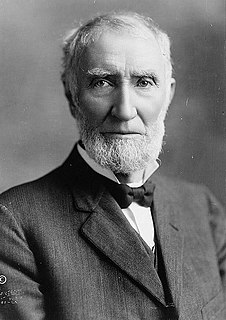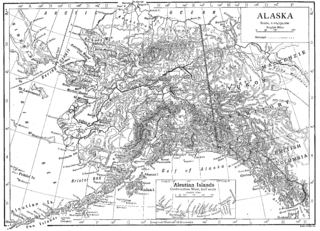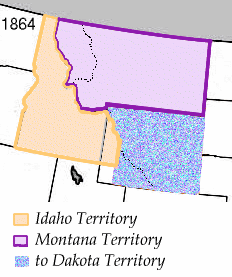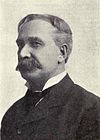
The Territory of Montana was an organized incorporated territory of the United States that existed from May 26, 1864, until November 8, 1889, when it was admitted as the 41st state in the Union as the state of Montana.

Since Montana became a U.S. state in 1889, it has sent congressional delegations to the United States Senate and the United States House of Representatives. Each state elects two senators to serve for six years. Before the Seventeenth Amendment took effect in 1913, senators were elected by the Montana State Legislature. Members of the House of Representatives are elected to two-year terms, one from Montana's at-large congressional district. Before becoming a state, the Territory of Montana elected a non-voting delegate at-large to Congress from 1864 to 1889.

The 1910 United States House of Representatives elections were held in the middle of President William Howard Taft's term.

The 1904 United States House of Representatives elections coincided with the election to a full term of President Theodore Roosevelt.

The 1900 United States House of Representatives elections were held, coinciding with the re-election of President William McKinley.

The 1884 United States House of Representatives elections, coincided with the election of President Grover Cleveland.

The 1882 United States House of Representatives elections were held during President Chester A. Arthur's term.

The 1872 and 1873 United States House of Representatives elections, coincided with the re-election of U.S. President Ulysses S. Grant.

The 1868 and 1869 United States House of Representatives elections coincided with the 1868 United States presidential election, which was won by Ulysses S. Grant.

The 1866 and 1867 United States House of Representatives elections were held during President Andrew Johnson's term.

The 1864 and 1865 United States House of Representatives elections coincided with the 1864 United States presidential election, in which President Abraham Lincoln was re-elected.

The 1854 and 1855 United States House of Representatives elections were held during President Franklin Pierce's term at various dates in different states from August 1854 to November 1855.

In 1798, the Northwest Territory became eligible to send a non-voting delegate to the U.S. Congress. The Assembly elected this representative.

Alaska Territory's at-large congressional district was a congressional district created in 1906 to represent the District of Alaska, which was reorganized into the Alaska Territory in 1912. After Alaska's admission to the Union as the 49th state by act of Congress on January 3, 1959, this district evolved into Alaska's at-large congressional district.
The Oklahoma Territory's at-large congressional district is a defunct congressional district that was created by the Organic Act of 1890 and ended with Oklahoma statehood. One delegate was to be sent to the U.S. House of Representatives from Oklahoma Territory.

Hawaii Territory's at-large congressional district was the congressional district for the Territory of Hawaii, which was established by the Newlands Resolution of 1898.

Iowa Territory's at-large congressional district is an obsolete congressional district that encompassed the area of the Iowa Territory, which was split off from the Wisconsin Territory in 1838. After Iowa's admission to the Union as the 29th state by act of Congress on December 28, 1846, this district was dissolved and replaced by Iowa's at-large congressional district.

Idaho Territory's at-large congressional district is an obsolete congressional district that encompassed the area of the Idaho Territory, which was originally created from parts of the Washington Territory and Dakota Territory in 1863. In 1864, parts of the territory were ceded back to the Dakota Territory and another part was reorganized into the Montana Territory. The boundaries of the territory were changed again in 1868 when the Wyoming Territory was created.

New Mexico Territory's at-large congressional district is an obsolete congressional district representing the New Mexico Territory, which was created in 1850. After New Mexico's admission to the Union as the 47th state by act of Congress on January 6, 1912, this district was dissolved and replaced by New Mexico's at-large congressional district.

The 1870 and 1871 United States House of Representatives elections were held in the middle of President Ulysses S. Grant's first term.























